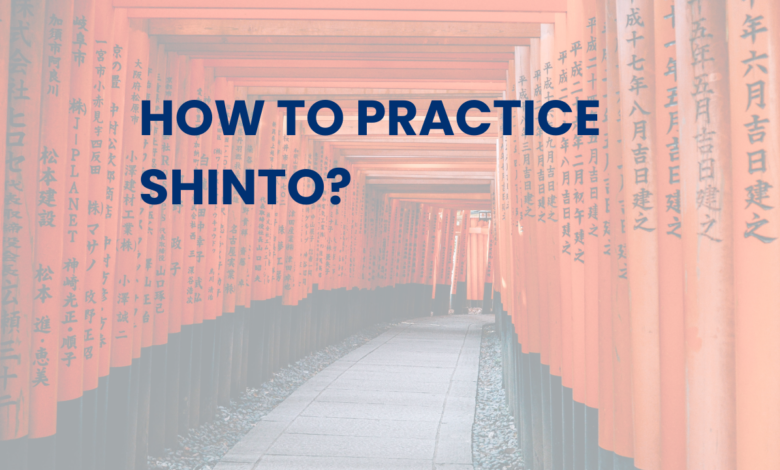How to Practice Shinto?
Embracing Japan's Indigenous Religion: A Guide to Shinto Practice

How to Practice Shinto?
Shinto is Japan’s indigenous religion that focuses on the veneration of kami, spirits that inhabit natural elements. It differs from many other religions in its strong emphasis on nature, rituals, and a lack of a formalized moral code.
Introduction
Shinto, Japan’s indigenous religion, is a belief system deeply intertwined with the country’s culture and history. Shinto emphasizes the veneration of kami, the spirits or deities that inhabit all natural elements and phenomena. Shinto’s focus on harmony with nature, ancestor worship, and purification rituals has made it a significant part of Japanese life for centuries. Whether you’re a curious traveler or someone seeking to incorporate Shinto principles into your own life, this guide will help you understand how to practice Shinto and appreciate its rich traditions.
Respect for Kami
At the core of Shinto practice is the reverence for kami, the divine spirits that inhabit the natural world. Kami can be found in rivers, mountains, trees, and even animals. To practice Shinto, start by acknowledging and respecting these spirits in your everyday life. Pay attention to the beauty and serenity of nature, and develop an attitude of gratitude for the world around you.
Also check.
- What do Shinto’s Believe?
- What is Shinto Religion?
- When did Christianity start?
- Why is the Cow Sacred in Hinduism?
- What are the Holy Books of Islam?
Visiting Shinto Shrines
One of the most common ways to engage with Shinto is by visiting Shinto shrines, which are dedicated to specific kami. When entering a shrine, follow these basic etiquette guidelines:
Bow at the entrance: Before passing through the torii gate (a traditional Shinto gate), bow to show respect to the kami and the shrine.
Purify yourself: Use the chozuya (a water basin) to cleanse your hands and mouth, a ritual called temizu, before entering the inner sanctum of the shrine.
Offer a prayer: Approach the main hall and make a donation or offer a prayer to the kami for guidance, protection, or gratitude.
Ring the bell: After your prayer, you may ring a bell or shake a rope to announce your presence to the kami.
Bow again: As you leave the shrine, bow once more to show respect.
Participate in Festivals
Shinto festivals, known as “matsuri,” are an integral part of the religion. These celebrations often involve parades, music, dance, and rituals to honor specific kami. If you have the opportunity, participate in these festivals, as they provide a vibrant and immersive experience of Shinto culture. You can also watch or join local communities in their festivities during your travels in Japan.
Practice Daily Purification
Purification plays a significant role in Shinto rituals. To incorporate this into your daily life, consider these practices:
Cleansing rituals: You can perform a simplified version of temizu, by using clean water to wash your hands and mouth every morning to purify your body and spirit.
Maintain cleanliness: Keep your surroundings clean and free of clutter to maintain a harmonious environment.
Mindfulness and gratitude: Develop a sense of mindfulness and gratitude for the natural world around you, acknowledging the presence of kami in all things.
Ancestor Worship
Shinto places great emphasis on honoring one’s ancestors. While this practice might not be as central to modern Shinto as it once was, it’s still a part of the tradition for many. You can honor your ancestors through rituals like making offerings or setting up a small family shrine.
Shimenawa and Shide
Shimenawa is a sacred rope made of rice straw or other materials, and shide are zigzag-shaped paper streamers. They are often found at the entrances of shrines and other sacred spaces to ward off evil spirits and signify the presence of kami. You can use them in your own home to create a sacred space or for seasonal decorations.
Conclusion
Practicing Shinto is not limited to the Japanese people alone; anyone can appreciate its wisdom and traditions. By respecting kami, visiting shrines, participating in festivals, practicing daily purification, honoring ancestors, and embracing sacred objects like shimenawa and shide, you can begin to incorporate Shinto principles into your life. Remember that Shinto is a highly personal and flexible belief system, and your approach can be tailored to suit your own spiritual journey and understanding of the world around you. Embracing the beauty and harmony of nature is at the heart of Shinto, and through these practices, you can find your own path to connection and spiritual growth.

FAQs
What is Shinto, and how does it differ from other religions?
Shinto is Japan’s indigenous religion that focuses on the veneration of kami, spirits that inhabit natural elements. It differs from many other religions in its strong emphasis on nature, rituals, and a lack of a formalized moral code.
Can non-Japanese individuals practice Shinto?
Yes, non-Japanese individuals can practice Shinto. Shinto is open to anyone who wishes to embrace its principles and rituals, and there are no specific restrictions based on nationality or ethnicity.
Are there specific rules for practicing Shinto at home?
Shinto practices at home can vary widely, but maintaining a clean and harmonious living space, making offerings to kami, and setting up a small household shrine are common home practices.




